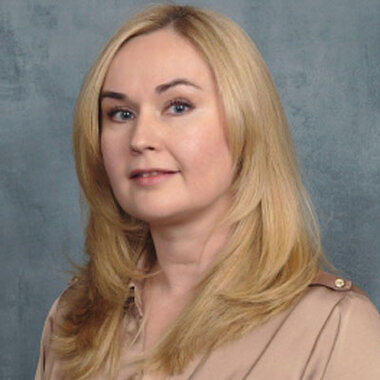Let’s talk CyTOF with Marina Malovichko, PhD
Marina Malovichko, PhD, is an Assistant Professor at the University of Louisville and Cytometry Core Director at Christina Lee Brown Envirome Institute and the University of Louisville Superfund Research Center working in the field of environmental toxicology. In our recent discussion, she offers insights into how the integration of CyTOF™ technology has helped her evolve her research.

Rapid-fire Q&A: We give you a topic, you tell us what’s on your mind.
Why CyTOF technology
CyTOF is a truly extraordinary technology in that it has the capability for ultrahigh-parameter cellular analyses and easy panel design. I come from using traditional and spectral flow cytometry where spectral overlap is an issue. With mass cytometry, it's very easy to design a panel or to exchange markers in the panel without worrying about that.
Panel design considerations
Panel design is simple because there is no spectral overlap, and there is a minimal spillover. This makes it easy to substitute markers. Plus, we have great service from the Standard BioTools™ team, where our field application scientist walks us through panel design itself and then through panel validation, all the way to data analysis.
When building a discovery panel, very often users want to change or add on markers at the last minute. It can be very difficult to accomplish utilizing spectral or traditional flow cytometry, but you can easily do that with mass cytometry. Because there are spectral overlaps and spillovers in fluorescence-based cytometry, even when you need to change one or two markers, sometimes you end up rearranging the whole panel, and that can be expensive and time-consuming. Mass cytometry panels are much easier to modify.
Fluorescence vs. CyTOF analysis
I find fluorescence and mass cytometry complementary to each other. Fluorescence cytometry gives you high-throughput capabilities, but mass cytometry is more suitable for larger discovery panels. Even though spectral flow cytometry is a breakthrough in multiparameter cytometry, it still has some limitations due to spillover, fluorescence background and spectral overlap.
The advantage of CyTOF is accuracy since it relies on mass spectrometry for detection. It is very quantitative. With minimal error and minimal overlap, and of course, the ultrahigh‑parameter capabilities, CyTOF is an excellent discovery tool.
Data analysis
The initial drawback of CyTOF was that data analysis used to be cumbersome, but now multiple tools are available. You can utilize common flow cytometry software like FlowJo, FCS Express, OMIQ for manual gating or dimensionality reduction analyses. Now there are also data analysis services available for unbiased automatic gating.
Advice for new users
For new users, I would say don’t struggle on your own, just talk to your field applications scientist – they're all great. They will walk you through the whole process and will help you to address any issue.
Imaging complements suspension
I mainly have experience with studying cells in suspension. I learned a lot at the 2023 CyTOF Summit about imaging, and I think that it can be complementary to flow cytometry.
In our work, sometimes suspension cytometry is not enough because it lacks spatial characteristics. Tissues and organs are not homogeneous, and it is important to know where cells are located. For instance, when we are looking at atherosclerotic lesions, it's important to know about immune cells’ location and environment. Suspension cytometry gives you an overall picture of cell composition, and imaging can add a spatial dimension to the data.
A workflow that we are trying to adopt now would start with analyzing cells in suspension and then we would look at the whole tissue utilizing Imaging Mass Cytometry™. This is what I plan to implement in the future for our core.
For Research Use Only. Not for use in diagnostic procedures. Patent and License Information: www.standardbio.com/legal/notices. Trademarks: www.standardbio.com/legal/trademarks. Any other trademarks are the sole property of their respective owners. ©2025 Standard BioTools Inc. All rights reserved.
